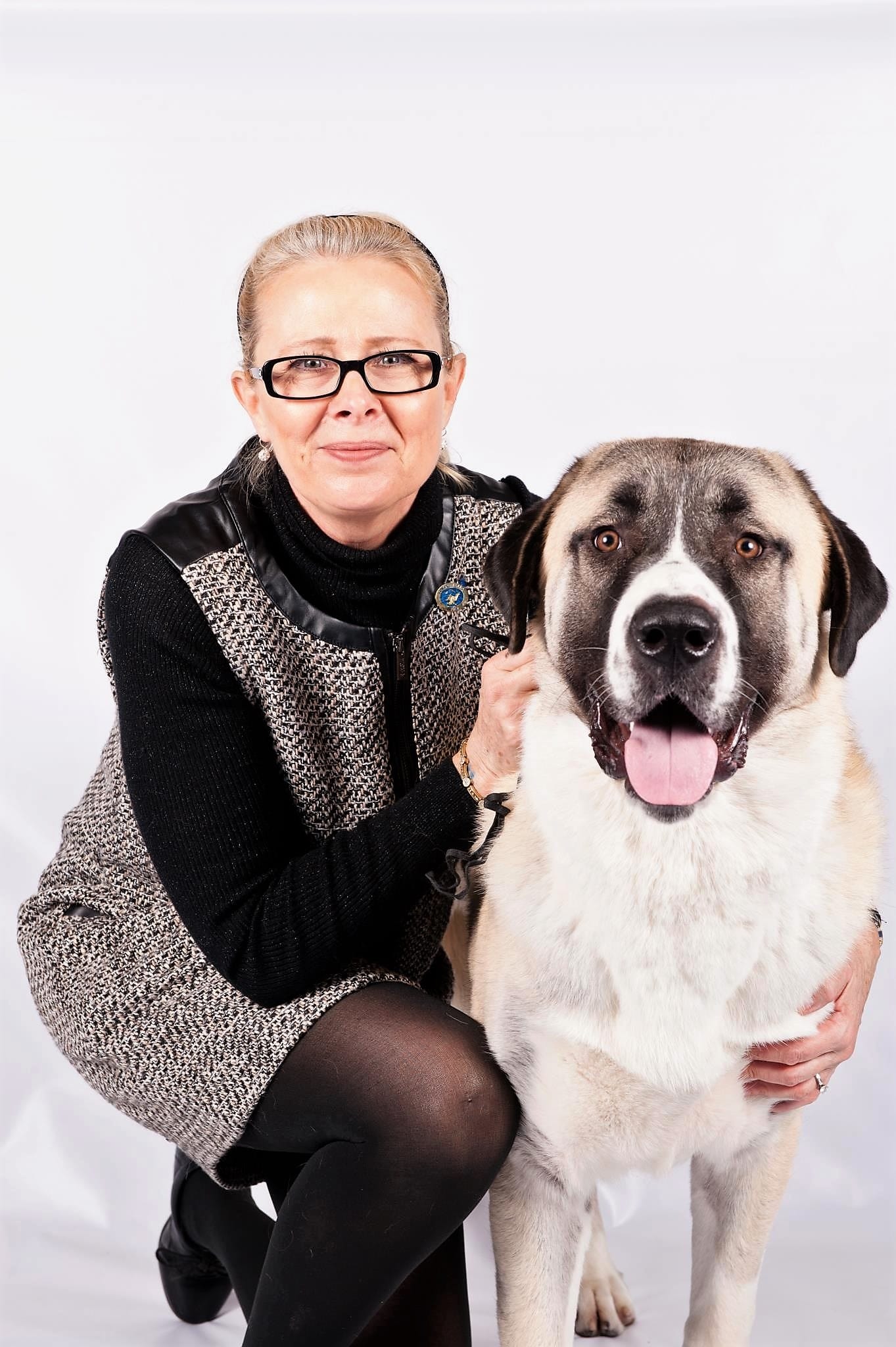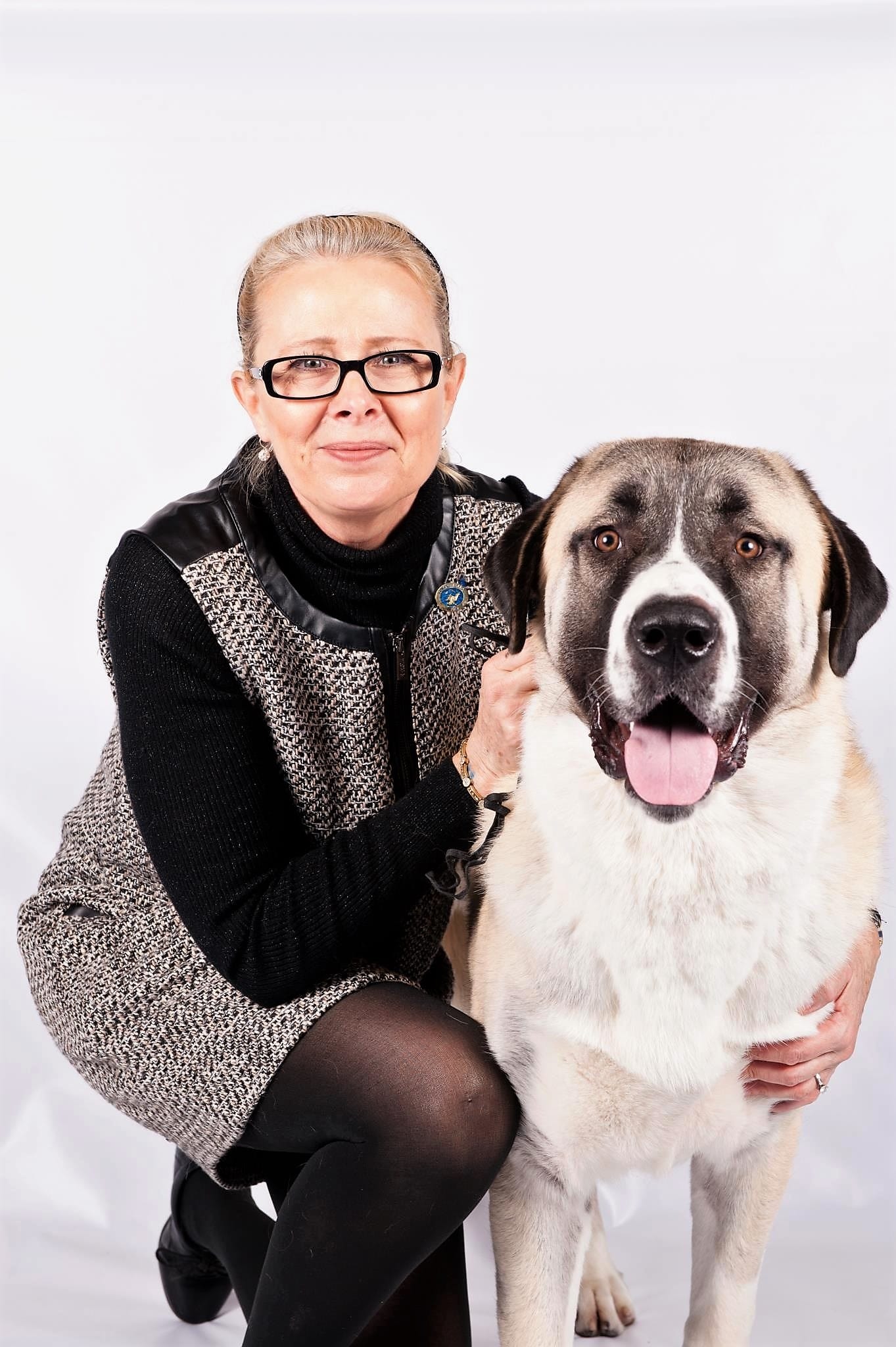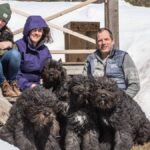The Essence of Anatolian Shepherd Dog breed: This is a Working Dog, first and foremost. “Shepherd” is in the dog’s name, but he is not a “herding” dog. The Essence of Anatolian Shepherd Dog is the shepherd’s dog. An even temperament is sought, and reserve out of territory is acceptable. Anatolians are not natural “show dogs.” He “shows” by appearing confident, alert, intelligent, and watchful. He goes to shows to please his master, not for making new friends or hearing applause. The Standard calls for “bold, but calm, unless challenged.”
Large, Rugged, Powerful and Impressive
The Anatolian Shepherd Dog is a ‘Working Guard Dog without Equal.’
DO NOT expect the Anatolian Shepherd Dog to respond to you with animation. No jigging chiclets or baby talk, please! His way is to tolerate your exam. Most of the Anatolians you will see in the showring are livestock guardians, and are shown by their owners. Please allow time to set the dog for exam, with plenty of room between exhibitors. Approach the dog by speaking to the handler, and examine him quickly and efficiently. Always ask the handler to show the bite and teeth. Note: This breed does not have to have full dentition nor are broken teeth a fault. Overshot, undershot or a wry bite is a disqualification; a level bite is acceptable, a scissors bite is preferred. This breed is presented, not shown. A loose lead is a must while gaiting, with plenty of room in between exhibitors.
The Anatolian Shepherd Dog is an ancient breed, some say it dates back to biblical times. Its origins are in Turkey and throughout Asia Minor. The dog was developed to meet the needs of ancient agrarian societies of The Old World. As the trade merchants in ancient times traveled throughout Europe and Asia Minor, the dogs that traveled with them bred with the dogs in those areas. This breed is a Molosser-type breed derivative with Sighthound. Thus, the Anatolian is large, rugged, powerful, and impressive. This is also the reason they are agile and light on their feet—and fast.
The essence of of Anatolian Shepherd Dog breed came about to fulfill the need of shepherds to have their livestock protected. This is a true livestock guardian breed (LGB). It’s as easy as that.
Over the centuries, the predation protection demands placed on the shepherds helped them to choose their breeding stock “as those who would answer the call.” The Anatolian Shepherd Dogs that you see today harken back centuries to those courageous ancestors. They were not chosen for beauty, but for bravery, intelligence, calmness under fire, and an instinct to decide what is a threat and what is not.
Study the Standard and consider the dog’s purpose. These are key elements in correctly judging our wonderful breed.
We at the Anatolian Shepherd Dog Club of America stand ready to help you understand and appreciate our beloved breed.
Some Notable Phenotypical and Standard Requirements to Keep in Mind
(This is not to be considered a complete listing, just some of the highlights.)
These dogs have a job to do, and they must be built to do the job. The old “form follows function” applies here.
- Head: Expression should be intelligent.
- Eyes: Are almond in shape, set apart, brown to
light amber in color without sag or looseness of haw. Pigmentation of the eye rims will be black
or brown. Blue eyes or two different color eyes
are a disqualification.
- Skull: In proportion with the body, containing a slight centerline furrow, fore and aft, from apparent stop to moderate occiput. With a powerful,
squared muzzle.
- Neck: Slightly arched, powerful, well-muscled, moderate in length with more skin and fur than elsewhere on the body, forming a protective ruff.
- Topline: There is a slight nick behind the withers. The back portion of the topline is powerful, muscular, and level, leading to a gradual arch over the loin, sloping slightly downward at the croup.
- Body: Well proportioned, functional, without exaggeration, never fat or soft. Chest is deep (to the elbow) and well-sprung, with a distinct tuck up at the loin.
- Tail: Should be long and reaching to the hocks. Do not uncurl the tail to measure it to the hock, unless you see it as being very short. (And, for heaven’s sake, do not pull on it.) Set on rather high. When relaxed, it is carried low, with the end curled upwards. When alert, the tail is carried high, making a “wheel.” “Wheel” carriage is preferred.
- Coat: According to the standard, all coat colors and markings are acceptable. The coat is a double coat and is anywhere from one inch to four inches in length; somewhat longer and thicker at the neck, forming that protective ruff. A thick undercoat is common to all! Remember the function of the breed: The coat protects from the elements and
the predators.
- Gait: The gait is powerful yet fluid. When viewed from the front or rear, the legs turn neither in nor out, nor do feet cross or interfere with each other. With increased speed, footfall converges toward the centerline of gravity. When viewed from the side, the front legs reach out smoothly with no obvious pounding. The withers and backline should stay nearly level, with little rise or fall.
The rear assembly should push out smoothly,
with hocks flexing well and doing their share of
the work.










